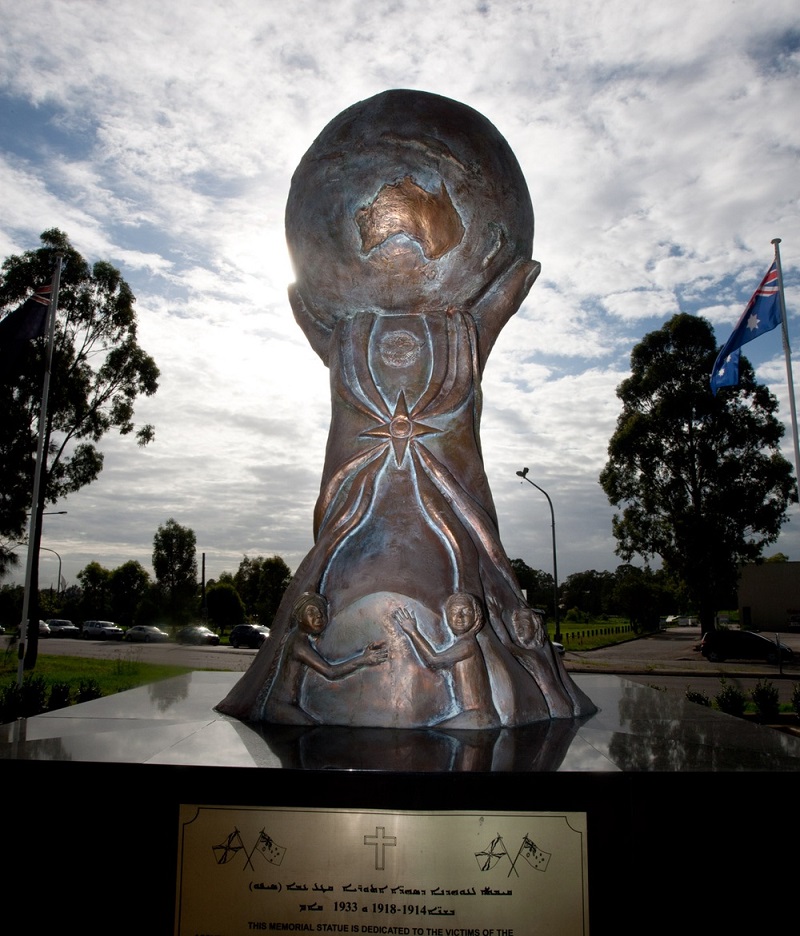


Assyrians have been settling in Australia since the 1950s, with the first arrivals fleeing from the 1958 revolution in Iraq. One of the earliest Assyrian arrivals, Phillip Damon, who arrived in Australia in 1964, explained the reaction of these first pioneers, saying that "Assyrians were happy to be settling in a democratic country and, more importantly, in a Christian country."
The Australian Assyrian community grew steadily in subsequent decades, reaching today's figure of 40,000 nationwide, with three quarters centered in the state of New South Wales and most in the suburb of Fairfield in Western Sydney. As the community grew, so did their churches, which played an important role in community life. In October 2015 the Australian Assyrian community celebrated the 25 year anniversary of the construction of the Saint Hurmizd Cathedral in Fairfield. Australia's second largest city of Melbourne hosts an Assyrian community of around 10,000, with two churches available for religious and social activities. The Australian Assyrian community continues to grow with the special intake of refugees from Syria currently being received under national government immigration priorities.
The Compass documentary underlined the important role of the church in maintaining Assyrian identity, faith and culture.
In an interview, Reverend Father Narsai Youkhanis, who at 21 was the youngest priest to be ordained into the Assyrian Church of the East, emphasized the church's key role in gathering and protecting Assyrians and their heritage. His ordination in 2010 was attended by over 2000 people, representing some 5% of the entire Assyrian community in Australia. It is hard to imagine another church in this country attracting 5% of the population to an ordination of one of its clergymen. This testifies to the degree to which church and community are inextricably interwoven in Australia's Assyrian community. This was also emphasized in interview by Natalie Moshi of the Assyrian Church of the East Relief Organization, who said: "Because we as a nation cannot point to a map and see Assyria clearly defined there, the church has as a result, almost by default, become our country, our guiding father, our guiding mother, a place where we can go to see our fellow people, to see our community."

The Australian Assyrian community is very conscious of the suffering of its fellow Assyrians overseas. The theme is emphasized by church figures such as Father Narsai, who commented that "suffering has made our church stronger. That is part of our DNA."
The community commemorates Assyrian Martyrs Day, to remember those Assyrians massacred at the hands of the Ottoman Turks during the First World War. However, it doesn't only look back to past suffering.The Australian Assyrian community is very conscious of the current plight of Assyrians overseas, especially in the Middle East. The Assyrian Resource Center in the heart of Fairfield is very active in this regard. Speaking on behalf of the ARC, Carmen Lazar explained how the Center helped Assyrians displaced by war in Syria in sponsoring them to come to Australia. She explained how the Assyrian church represented the first port of call for assistance: "Our churches are our shelter; our churches are our point of contact. Without our churches we are not recognized anywhere."
While clearly active in its advocacy for the Assyrian community in Australia and overseas, the Assyrian Church of the East also devotes attention to presenting a relevant message to its local youth. The Eucharist is traditionally said in ancient Aramaic. However one of the initiatives by Father Narsai has been to conduct the Mass in the modern Assyrian language in order to reach out to the youth of the community. This has attracted some criticism from conservative voices in the community, concerned by the fact that modern Assyrian includes some loan words from Arabic, Turkish and Kurdish. Additionally, the Eucharist is now also being celebrated in English in some masses so that it is more accessible to the increasing numbers of Assyrian families in Australia who only speak English.
Though only representing 0.15% of Australia's overall population, the Assyrian community is vibrant and growing. Its identity is not under threat, not only thanks to new arrivals through Australia's refugee and immigration program, but also thanks to the dynamic nature of the Assyrian church, which serves as a place of faith and worship, as well as an engine of advocacy and social action. The Assyrian community in Australia is clearly here to stay and represents a welcome addition to Australia's multicultural society.

or register to post a comment.